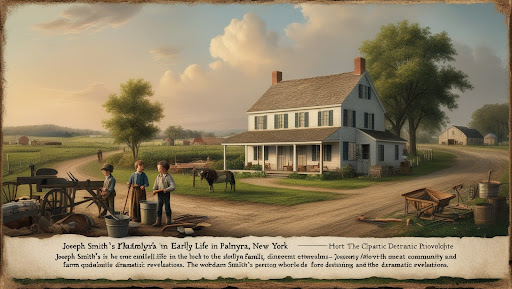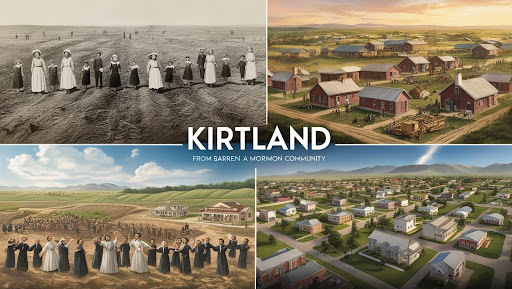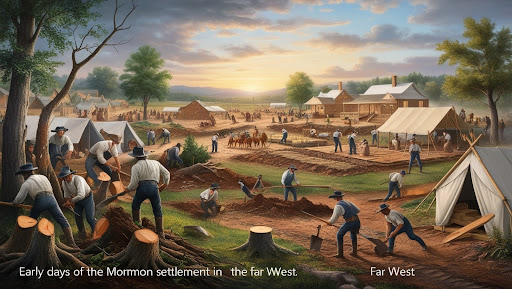Jackson County and the Peak of Mormon Rebellion
So, imagine this: a crew of believers rolling into Jackson County, Missouri, thinking they’ve just landed in their version of paradise—Zion, the promised land. These Mormons were hyped and ready to build a new world from the ground up. But, things didn’t go as smoothly as planned. This wasn’t just some chill relocation; it turned into a full-on rebellion, with tensions rising, mobs forming, and dreams getting shattered. Jackson County wasn’t just a place on the map—it was a battleground where faith, community, and sheer grit went head-to-head with resistance, forcing the Mormons to fight for everything they believed in.
Rolling into Jackson County

When the Mormons touched down in Jackson County, they weren’t just looking for any old place to settle—they were convinced this was Zion, the land they’d been promised. They rolled up with high hopes, seeing Jackson County as their spiritual home base where they could finally build their dream community. It wasn’t just about finding land; it was about fulfilling a prophecy, and these folks were ready to make that dream real. Jackson County wasn’t just some spot on the map—it was their future, and they were all in.
Initial Excitement:
-
Eager anticipation of a fresh start.
-
Setting up temporary camps and meeting spots.
-
Gathering local supplies to kick off the new community.
Building the Vision:
-
Planning out the layout for homes and farms.
-
Creating communal spaces like schools and churches.
-
Establishing the first Mormon businesses and services.
Early Challenges:
-
Navigating unfamiliar terrain and climate.
-
Dealing with limited resources and supplies.
-
Adjusting to the realities of frontier life.
They didn’t waste any time. As soon as they arrived, they got to work. Homes were being built, farms were being set up, and plans were being made for a thriving community. It was like a fresh start, and everyone was buzzing with energy. There was this sense of excitement in the air—like, this was it, the place they were meant to be. They weren’t just building homes; they were building their vision of Zion, piece by piece. Every brick laid was like another step closer to the promised land.
Settling in the Wild West
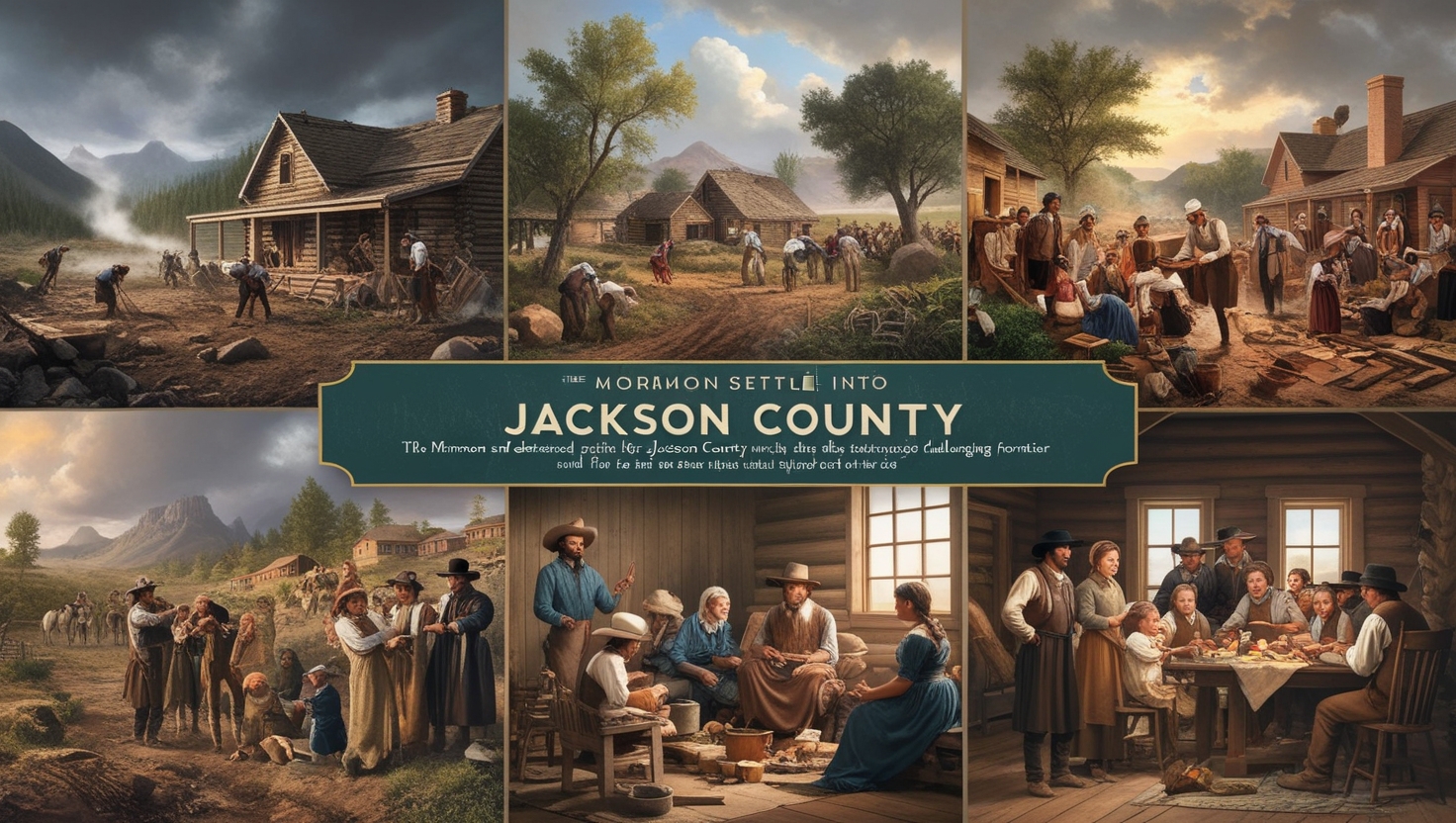
At first, Jackson County seemed like the perfect spot to start fresh. But life on the frontier was no joke. The Mormons were stepping into wild territory—this wasn’t the well-established East Coast. They had to start from scratch, building everything from homes to farms, and learning how to survive in a land that wasn’t exactly rolling out the welcome mat. The dream was big, but reality hit hard. The land was tough, the work was grueling, and they had to rely on each other just to get by.
Frontier Life:
-
Facing the harsh conditions of the Missouri wilderness.
-
Adapting to the rough living conditions and unpredictable weather.
-
Learning survival skills and farming techniques on the fly.
Community Building:
-
Forming tight-knit neighborhoods for mutual support.
-
Establishing social structures and leadership roles.
-
Celebrating small victories and milestones in their new home.
Cultural Clash:
-
Encountering cultural differences with local settlers.
-
Struggling to balance Mormon practices with local customs.
-
Dealing with initial misunderstandings and conflicts.
But despite the struggles, they kept pushing. The idea of Zion wasn’t something they could just walk away from. So they plowed through, literally and figuratively, to make their vision real. They were carving out a place for themselves in a world that wasn’t built for them. And while the hard work wasn’t glamorous, it was necessary. This wasn’t just about surviving—it was about making their dream happen, no matter how tough things got.
When Locals Didn’t Vibe with the Newcomers
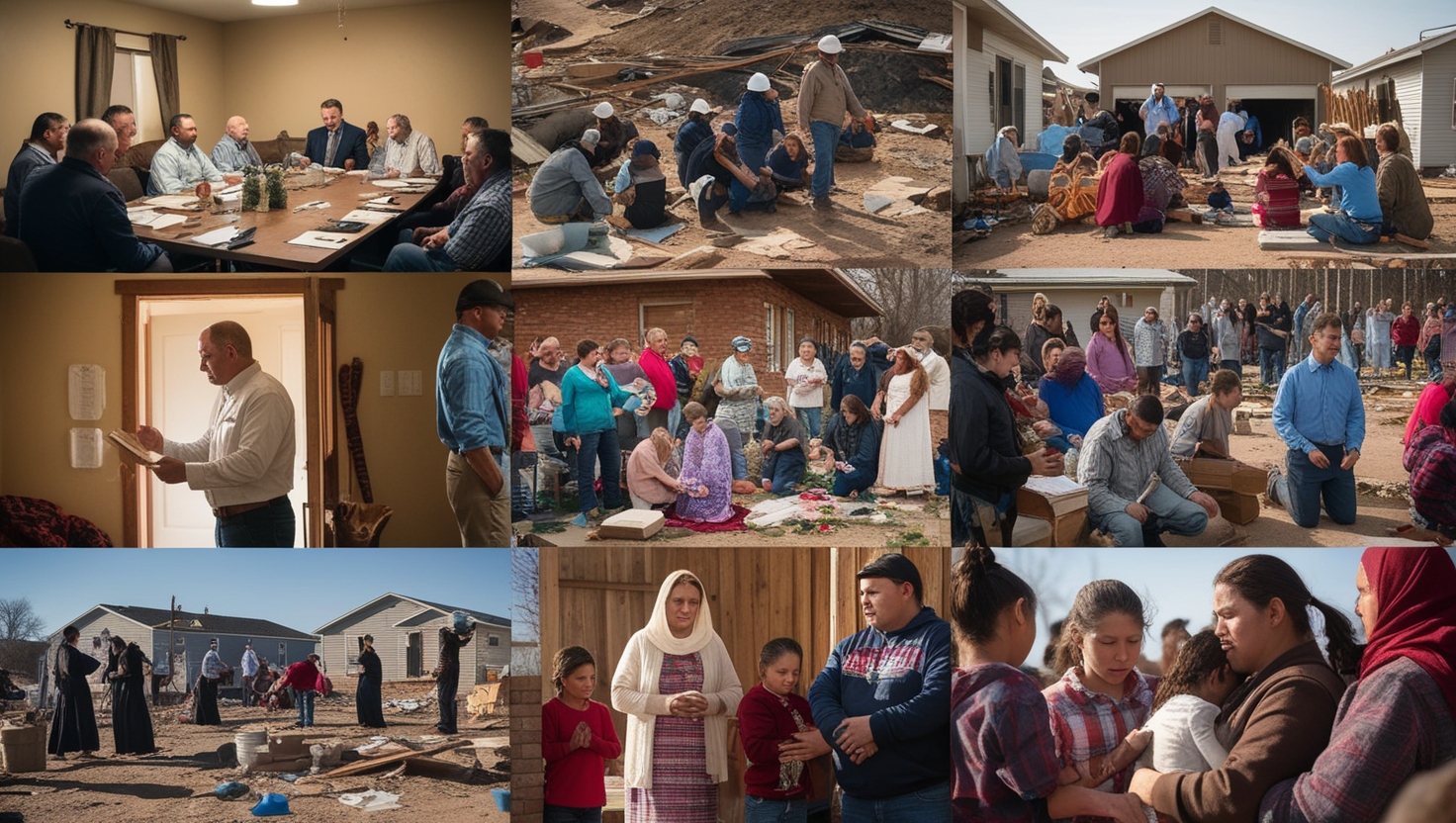
Things in Jackson County didn’t stay peaceful for long. The locals weren’t exactly vibing with the new Mormon settlers. At first, it was just minor tension—side-eye looks, quiet grumbling—but as the Mormon population grew, so did the problems. The locals started feeling like these newcomers were taking over, and that feeling quickly turned into fear. The Mormons’ beliefs, their numbers, their influence—it was all too much for the original settlers, and soon, the quiet grumbling turned into open hostility.
Growing Resentment:
-
Local settlers feeling threatened by Mormon expansion.
-
Rumors and misunderstandings escalating tensions.
-
Disputes over land and resources becoming more frequent.
Social Friction:
-
Mormons being viewed as outsiders and troublemakers.
-
Increased hostility as local communities organized against them.
-
Local leaders and officials taking a stand against Mormon influence.
Community Polarization:
-
Divisions forming between Mormon settlers and local residents.
-
Public demonstrations of hostility and protest.
-
Increasing incidents of harassment and violence.
The more the Mormons built their community, the more the locals felt like they were losing control of their own turf. And it wasn’t just about land—it was about culture, religion, and power. The Mormons were different, and that difference made the locals uneasy. They saw the Mormons’ growing influence as a threat, and that fear turned into resentment. Before long, it wasn’t just whispers behind closed doors—it was open conflict, with lines being drawn between the Mormon settlers and the local Missourians.
Violence and Expulsion from Jackson County

The rising tensions in Jackson County hit a boiling point when locals decided they’d had enough. They weren’t content with just making life difficult for the Mormons—they wanted them gone, for good. That’s when the mobs started forming, and things got real violent, real fast. Homes were burned, farms were destroyed, and Mormon families were forced to flee for their lives. The peaceful dream of Zion turned into a nightmare as angry crowds did everything they could to drive the Mormons out.
Escalation of Violence:
-
Mobs forming to forcibly remove Mormons from their homes.
-
Acts of arson and vandalism targeting Mormon properties.
-
Physical confrontations and threats driving Mormons to flee.
Destruction of Property:
-
Homes and farms being destroyed by angry crowds.
-
Loss of personal belongings and community infrastructure.
-
Disruption of daily life and economic activities.
Forced Evacuation:
-
Mormons organizing hasty evacuations to escape violence.
-
Emotional and physical toll of leaving behind their hard work.
-
Relocation to nearby areas in search of safety and stability.
The violence wasn’t random—it was organized and relentless. The locals were determined to wipe the Mormons out of Jackson County, no matter the cost. It wasn’t just about getting rid of a few people; it was about dismantling the entire community, breaking the Mormons’ spirit, and making sure they never came back. The mobs tore through the settlements, leaving destruction in their wake, and the Mormons had no choice but to retreat. The promised land they had worked so hard to build was slipping through their fingers.
The Mormon Resistance
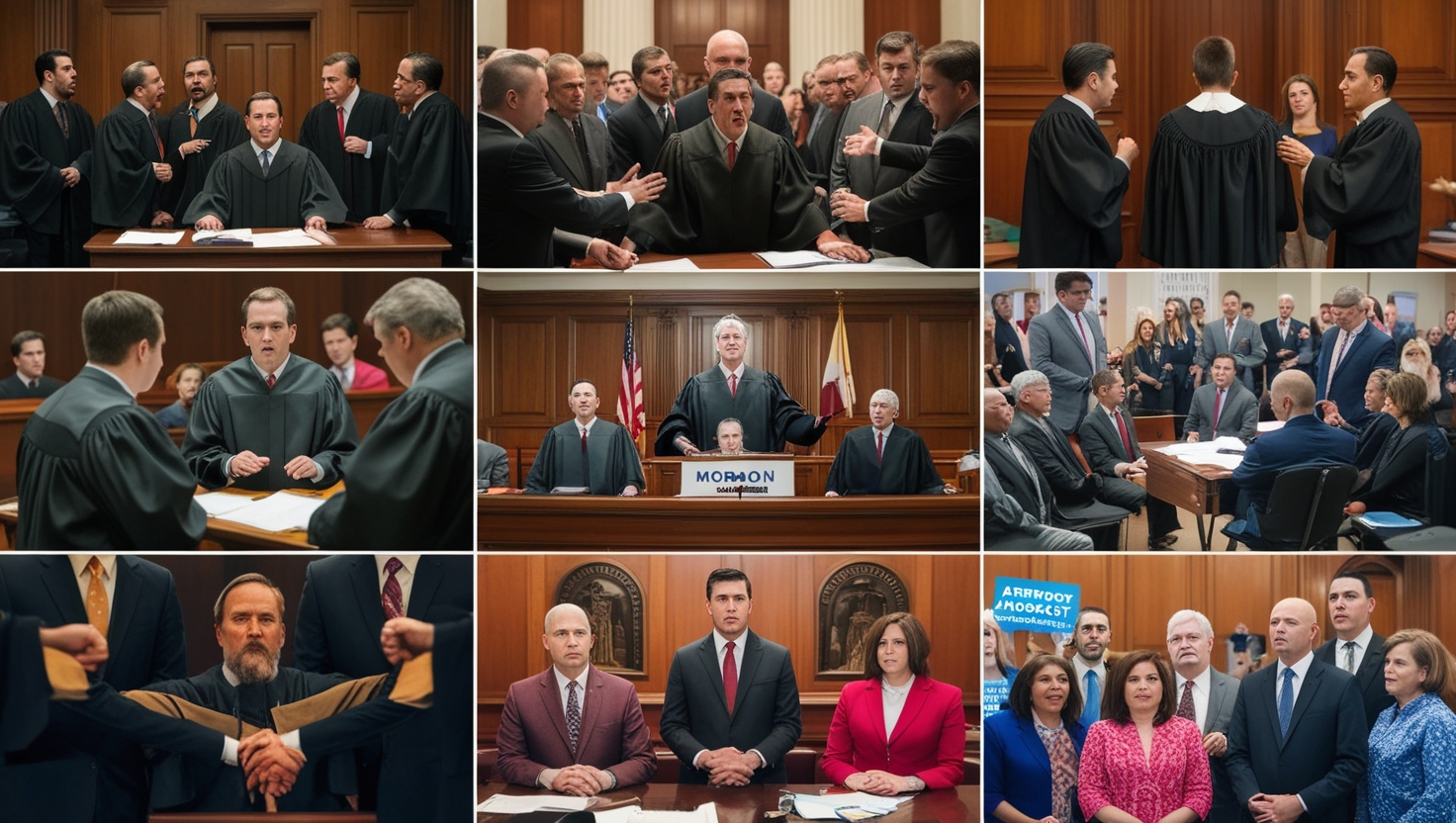
Even as the violence ramped up, the Mormons weren’t about to just roll over and give up. They had come to Jackson County for a reason, and they weren’t going to let mobs and threats chase them away without a fight. Behind the scenes, they started organizing—secret meetings, plans to resist, and strategies to protect what was left of their community. It wasn’t just about staying alive; it was about standing strong in the face of overwhelming opposition.
Organizing Resistance:
-
Secret meetings and strategies to counteract violence.
-
Establishing defensive measures to protect their community.
-
Mobilizing supporters to stand up against aggression.
Spiritual Fortitude:
-
Maintaining faith and hope despite mounting pressure.
-
Using prayer and religious gatherings as sources of strength.
-
Encouraging each other to keep fighting for their vision.
Community Solidarity:
-
Holding together as a united front in the face of adversity.
-
Supporting one another through hardship and displacement.
-
Sharing resources and strategies to withstand the attacks.
The resistance wasn’t just physical—it was spiritual and emotional, too. The Mormons held on to their belief that Jackson County was still Zion, no matter what was happening around them. They clung to their faith, even when it seemed like everything was falling apart. They prayed for strength, for guidance, and for the courage to keep going. For them, this wasn’t just a physical battle; it was a test of their faith and their resolve. Every act of resistance was
Fighting for Rights in Courtrooms

As the violence escalated, the Mormons realized they couldn’t just fight this battle in the streets—they had to take it to the courtrooms. The mobs had pushed them out of Jackson County, but the Mormons weren’t about to let that stand without a fight. They turned to the legal system, hoping for some form of justice. They argued their case in Missouri courts, appealing to the government to step in and protect their rights. It was a new kind of battle, fought with legal briefs and court appearances instead of fists and guns.
Legal Battles:
-
Filing lawsuits to contest the legality of their expulsion.
-
Presenting evidence of unfair treatment and property loss.
-
Seeking intervention from higher authorities and legal bodies.
Advocacy Efforts:
-
Lobbying for support from sympathetic politicians and officials.
-
Raising awareness about their plight through petitions and appeals.
-
Engaging with media and public figures to gain public sympathy.
Courtroom Challenges:
-
Facing biased judges and unfavorable legal environments.
-
Dealing with slow legal processes and limited victories.
-
Navigating a complex legal landscape to achieve justice.
The Mormons’ legal fight wasn’t just about getting back what they had lost—it was about proving that they had a right to exist in Jackson County, just like anyone else. They made their case to the courts, pointing out that they had been violently driven from their homes without any legal justification. They wanted justice for the wrongs they had suffered, and they were willing to go through the legal system to get it. It wasn’t just about winning back land—it was about standing up for their rights as citizens.
The Heartbreak of Relocating
The realization that Jackson County was no longer safe was a heavy blow for the Mormons. They had poured their hearts and souls into making this place their Zion, and having to leave was a heart-wrenching experience. The decision to pack up and relocate wasn’t just about moving to a new place—it was about letting go of their dreams and accepting that their vision of Zion in Missouri was over, at least for the time being. The pain of leaving their homes and the community they had built was intense and deeply felt.
Packing Up:
-
Coordinating the logistics of a large-scale move.
-
Sorting and packing belongings amid emotional distress.
-
Saying goodbye to friends and the community they had built.
New Beginnings:
-
Settling into new locations and starting over.
-
Rebuilding homes, farms, and businesses in unfamiliar territory.
-
Facing the emotional impact of leaving their dream behind.
Holding on to Hope:
-
Keeping faith in their vision despite the setbacks.
-
Finding solace in their shared beliefs and goals.
-
Preparing for future opportunities to realize their dream.
Packing up was a monumental task. The Mormons had to abandon their farms, homes, and businesses, leaving behind everything they had worked so hard to build. The physical act of moving was daunting, but the emotional toll was even greater. They had to reconcile their dreams with the harsh reality of their situation, knowing that their departure was not a sign of failure but a strategic decision to protect their lives and their faith. It was a moment of deep reflection and sorrow as they prepared to say goodbye to their beloved Jackson County.
How Jackson County Shaped the Future
|
Impact on Mormon Identity
|
Lessons in Resilience
|
Influence on Future Settlements
|
Symbol of Faith and Struggle
|
|
The conflict cemented the Mormons’ sense of identity as a persecuted group.
|
The struggle in Jackson County taught them the power of perseverance.
|
The experience shaped how they approached building new communities.
|
Jackson County became a powerful symbol of their fight for religious freedom.
|
|
Facing intense opposition strengthened their resolve and unity.
|
The hardships faced became lessons in tenacity and hope.
|
New settlements were built with greater awareness of potential conflicts.
|
Their resilience and faith were tested, but also reinforced.
|
|
The experience solidified their determination to create a safe, supportive community.
|
Learning to adapt and overcome difficulties became central to their approach.
|
The legacy of Jackson County influenced the establishment of future Mormon hubs.
|
The story of Jackson County is remembered as a chapter of courage and faith.
|
Jackson County wasn’t just a location in Mormon history—it was a crucible that forged their character and tested their beliefs. The rebellion and subsequent expulsion marked a significant chapter in their journey, leaving a legacy that would shape their future endeavors. The trials they faced in Jackson County became lessons in resilience and a testament to their unwavering faith. The experience underscored the challenges of building a community in the face of adversity, but it also highlighted their commitment to their vision and their ability to rise above hardship. Jackson County remains a symbol of their struggle and a reminder of the strength and determination that defined their journey.
Our other articles:
Joseph Smith, the man, the myth, the prophet. Some say he was just a small-town kid with big dreams, but that kid from upstate New York straight-up changed the game. From visions and golden plates to building cities and founding one of the most influential religions in the world, Joseph Smith's life reads like the ultimate plot twist.
Yo, ever wonder how a whole movement kicks off? Like, where does it all start? Well, for the Mormons, it all began in a tiny town in New York that no one had ever heard of. We're talking about Palmyra, a quiet spot that ended up being the birthplace of something way bigger than anyone could’ve imagined.
Kirtland, Ohio. It might not sound like much now, but back in the day, this spot was where the Mormon dream got real. Picture this: a whole crew of believers, fresh off the struggle in New York, rolling into Kirtland with nothing but faith and determination. They were about to take the wild visions of Joseph Smith and turn them into something concrete—literally.
Alright, fam, buckle up because we’re diving into the wild ride that was the Mormon migration to Far West. Picture this: a crew of pioneers, bursting with dreams and determination, rolling up to what they hoped would be their new spiritual epicenter. Far West wasn’t just another spot on the map; it was their chance to build a fresh new world.
Yo, history buffs and curious minds alike, get ready to dive into the untold tales of some seriously epic Mormons who shaped the faith in ways you might not know. We’re talking about those behind-the-scenes legends whose stories are just waiting to be uncovered.

